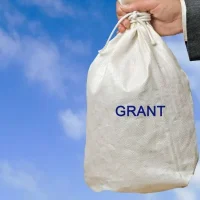Reforestation grants are financial incentives provided by governments, non-profit organizations, and private entities to support the restoration of forests that have been depleted or degraded. These grants aim to encourage landowners, communities, and organizations to engage in activities that promote the planting of trees, the restoration of natural habitats, and the overall enhancement of forest ecosystems. The significance of reforestation cannot be overstated; it plays a crucial role in combating climate change, preserving biodiversity, and improving air and water quality.
By understanding the mechanisms behind these grants, stakeholders can better navigate the opportunities available to them. The process of securing a reforestation grant often involves a thorough understanding of the specific goals and requirements set forth by the granting body. Each organization may have its own criteria for funding, which can include factors such as the type of reforestation project, geographic location, and the anticipated environmental benefits.
Additionally, potential applicants must be aware of the broader context in which these grants operate, including local and global environmental policies that prioritize sustainable land management practices. By aligning their projects with these objectives, applicants can enhance their chances of receiving funding.
Eligibility and Application Process
Eligibility for reforestation grants varies widely depending on the source of funding. Generally, applicants may include private landowners, non-profit organizations, educational institutions, and government agencies. Some grants are specifically designed for community-based projects that involve local stakeholders in the reforestation process.
To determine eligibility, potential applicants should carefully review the guidelines provided by the granting organization, as these will outline specific requirements such as project scope, location, and intended outcomes. The application process for reforestation grants can be intricate and time-consuming. Typically, it involves submitting a detailed proposal that outlines the project’s objectives, methodology, budget, and timeline.
Applicants may also need to provide evidence of their capacity to manage the project effectively, including qualifications of team members and previous experience in similar initiatives. It is essential for applicants to present a compelling case that demonstrates not only the environmental benefits of their project but also its social and economic impacts. Engaging with local communities and stakeholders can strengthen proposals by showcasing collaborative efforts and shared benefits.
Types of Grants Available
Reforestation grants come in various forms, each tailored to meet specific needs and objectives. Government grants are often the most substantial sources of funding, typically aimed at large-scale projects that align with national or regional environmental goals. These grants may be administered through federal or state agencies and can cover a wide range of activities from tree planting to habitat restoration.
Additionally, many governments offer tax incentives or cost-sharing programs to encourage private landowners to participate in reforestation efforts. Non-profit organizations also play a significant role in providing reforestation grants. These entities often focus on specific ecological issues or geographic areas and may offer smaller grants for community-based projects.
Some foundations prioritize innovative approaches to reforestation, such as agroforestry or urban forestry initiatives. Furthermore, corporate social responsibility programs increasingly support reforestation efforts as part of their sustainability commitments. These grants can provide valuable resources for projects that not only restore forests but also enhance community resilience and economic development.
Importance of Sustainable Forestry Management
Sustainable forestry management is integral to the success of reforestation efforts. It encompasses practices that ensure forests are managed in a way that meets current ecological, social, and economic needs without compromising the ability of future generations to meet their own needs. This approach recognizes the interconnectedness of forest ecosystems with human livelihoods and emphasizes the importance of maintaining biodiversity while providing resources such as timber and non-timber forest products.
Implementing sustainable forestry practices can significantly enhance the effectiveness of reforestation projects. For instance, selecting native tree species that are well-adapted to local conditions can improve survival rates and promote biodiversity. Additionally, sustainable management practices such as selective logging and controlled grazing can help maintain healthy forest ecosystems while allowing for economic activities.
By prioritizing sustainability in forestry management, stakeholders can create resilient landscapes that provide long-term benefits for both people and the environment.
Successful Reforestation and Forestry Projects
Numerous successful reforestation projects around the world serve as inspiring examples of what can be achieved through dedicated efforts and effective funding mechanisms. One notable case is the Bonn Challenge, a global initiative aimed at restoring 150 million hectares of deforested and degraded land by 2020. This ambitious project has seen participation from various countries and organizations, leading to significant advancements in reforestation practices and policies.
Another exemplary project is the Million Tree Initiative in Los Angeles, which aims to plant one million trees across the city to combat urban heat and improve air quality. This initiative has successfully engaged local communities, schools, and businesses in tree planting efforts while raising awareness about the importance of urban forestry. Such projects not only contribute to environmental restoration but also foster community engagement and education about sustainable practices.
Resources and Support for Grant Recipients
For those fortunate enough to receive reforestation grants, a wealth of resources and support is available to ensure project success. Many granting organizations provide technical assistance throughout the project lifecycle, offering guidance on best practices for planting, maintenance, and monitoring. This support can be invaluable for recipients who may lack experience in managing large-scale reforestation efforts.
Additionally, networking opportunities abound for grant recipients through workshops, conferences, and online forums dedicated to forestry management and conservation. These platforms allow individuals and organizations to share experiences, challenges, and successes while fostering collaboration among stakeholders. Furthermore, access to research findings and case studies can inform best practices and innovative approaches to reforestation.
In conclusion, reforestation grants represent a vital tool in the global effort to restore degraded landscapes and combat climate change. By understanding the intricacies of eligibility requirements, application processes, and types of available funding, stakeholders can effectively navigate this landscape. The importance of sustainable forestry management cannot be overstated; it ensures that reforestation efforts yield long-term benefits for both ecosystems and communities.
Successful projects around the world serve as testament to what can be achieved through collaboration and commitment. Finally, ongoing resources and support for grant recipients are essential in fostering a culture of sustainability that will benefit future generations.
For organizations and individuals interested in environmental conservation and sustainable practices, exploring funding opportunities is crucial. While the specific focus on reforestation and sustainable forestry management might not be directly addressed in the links provided, the Rhode Island Foundation’s 1829 Legacy Fund Grants could potentially encompass projects related to environmental sustainability. This fund supports a variety of initiatives and could be a valuable resource for those looking to secure financial support for projects that include reforestation and sustainable forestry management within their broader environmental goals.









































